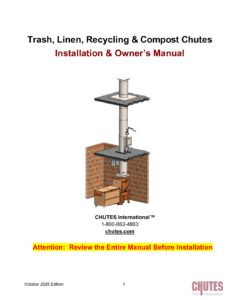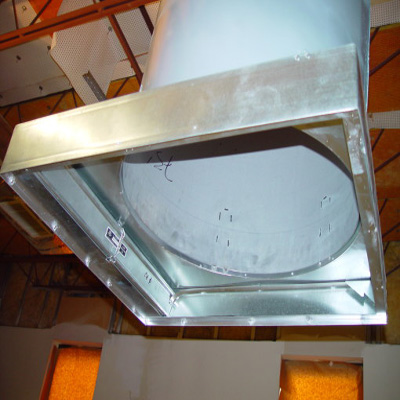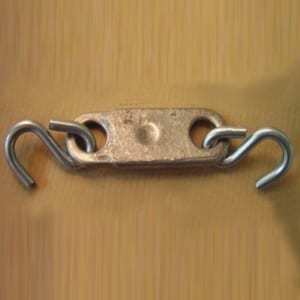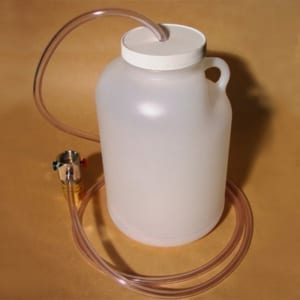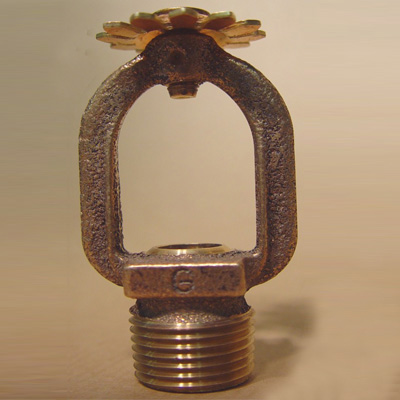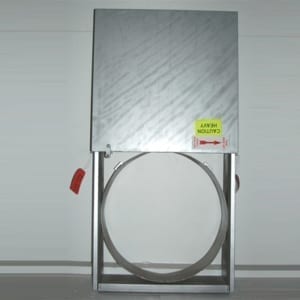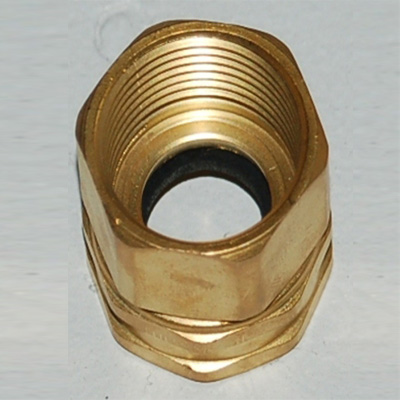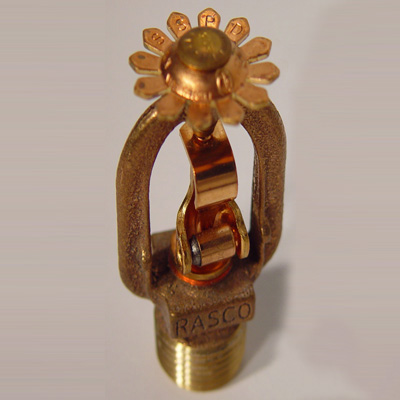Operating since 1989, CHUTES International is backed by 15+ patented product lines of industry-leading designs and patents. Our internal chute systems are engineered for unmatched durability. Every component is proudly Made in the USA. We provide a genuine one-stop shop experience, from delivering your customized Trash, Recycling, or Linen Chute to supplying all necessary parts, trash room and chute odor control systems, and comprehensive post-installation support. Our integrated services, including routine maintenance, repair, and cleaning, along with free NFPA compliance inspections, ensuring your chute system operates safely and efficiently for life.
Our trash, recycling and linen chutes are made of aluminized or stainless steel, depending on the application, and come in standard sizes. As a manufacturer, we can also provide custom sized chutes. Our chute doors are all 100% stainless steel, front and back panels, sides and skirt. All sections are fully welded. We offer a choice of discharge for trash chutes and a standard linen hopper for laundry chutes. A fully trained staff of estimators is available to answer questions, provide training, and work with architects and/or bid and spec writers. We offer a continuing education course through AEC Daily or in-person lunch and learn sessions for architects as we recognize the importance of keeping certifications current. Our chutes are found in high rise apartment buildings, office buildings, hotels and hospitals.
We designed our linen or residential laundry chutes to include the only intake door on the market with both front and back stainless steel panels and skirts. This means our laundry chutes are built to endure years of regular, heavy use.
As with our linen chutes, our trash chutes are better looking, longer lasting, easier to clean, and require less maintenance. Our trash chutes are also outfitted with the only intake door on the market with both front and back stainless panels and skirts.
Recycling Chutes
Whether your recycling general household waste or office materials, our recycling chutes can assist in your clean up. Built sturdy with a thickness of 16 ga. aluminized steel or stainless steel, and fully welded seams.
Superior Engineering and Manufacturing
As a standard, CHUTES provides a safe, accordion discharge which has been repeatedly proven as the best choice for the discharge: safer and more reliable in case of fire. Electric interlocks are pre-wired, eliminating the need for the additional cost of hiring an electrician to complete the wiring. Chute sections are shipped, pre-numbered and matching the approved as-built shop drawing for ease of installation. Our doors are individually and specially packaged to avoid damage during shipment. We also addressed some of the basic problems and issues of the standard chute when we engineered ours. For instance, by covering the hinge, debris cannot wedge into the opening, eliminating that common cause of damage. Our Total Quality Control Procedure continues to bring about improvements both small and large in manufacturing, product design and ease of installation.
Chute Installation
If you need help with staging and installation of your chute, we’ll send one of our expert-trained technicians, who is 100% guaranteed to do the job right the first time. In addition to quality installation, these experts will show you proper operation and usage rules so that your chute will last a long, long time. Our expert installation supervisors have years of experience installing chutes and are there to ensure quality in every aspect of the process.
Below is a downloadable instruction manual specific to internal chute installation.
Frequently Asked Questions
What do you think the best way is to inform users of the trash chute as to what is acceptable to throw down the trash chute?
Posting trash chute rules by the trash room doors may help those using the chute know how to use it effectively.
I am having issues with our trash chute pneumatic doors. Could it be the air compressor?
It could be an issue with the air compressor. Do you know if your air compressor is in good working condition? Are you draining it regularly based on usage? CHUTES offers an option of an auto-drain assembly on a system that is not maintained daily.
I’ve cleaned the trash room, and now my compactor is not running.
While cleaning your trash room, CHUTES cautions against wetting the control panel. Wetting the control panel will prevent the compactor from running.
What is the industry standard diameter for a trash chute, and can I minimize the chance of trash chute jams?
The industry standard trash chute is 24″ diameter with 15″ x 18″ bottom hinged intake doors.
In recent years, larger packing boxes (such as super-sized pizza, television boxes, etc.) have become the number one cause of chute jams. The user attempts to fold up the packaging and tosses it in the trash chute, where it unfolds and gets stuck, causing a chute jam.
Because of this, it is strongly recommend to use a 28″ or 30″ diameter trash chute with the standard 15″ x 18″ bottom hinged intake door to lessen the chances of chute jamming. While larger trash chutes can have larger sized intake doors, sticking with the 15″ x 18″ discourages the forcing of larger items into the chute.
Please explain the UL labeled 1½-hour, maximum 30-minute, 250°F temperature rise test on the intake doors. And is a door with a UL labeled 650°F better constructed?
The testing is performed with a flame source directed to the inside and outside panel of the intake door. For a period of 30 minutes, the temperature on the panels cannot rise more than 250°F.
An intake door with the UL labeled 650°F testing is poorly constructed because in 30 minutes, the temperature rose 400° higher than the 250° rated intake door.
What is the smallest size trash and linen chute that can be specified for my project?
NFPA 82 2019 Chapter 6 states that the minimum size required is 24″ diameter or 22½” square constructed of 16 U.S. gauge minimum thickness of stainless, galvanized, or aluminum coated steel.
Do trash & linen chutes have to vent through the roof?
Trash & linen chutes are required to vent, at full diameter, 3’ about the roof penetration as mandated by NFPA 82 Chapter 6
Are trash and linen chutes required to be straight and plumb, and can trash and linen chutes offset?
NFPA 82 2019 Chapter 6 permits offsets (any offset that is between the top intake and the discharge) of not greater than 15 degrees. Vent offsets (above the top intake) cannot be greater than 90 degrees from plumb..
Note: Offsets must have the approval of the local authority having jurisdiction.
What is the difference between a public access chute and a restricted access chute?
A general/public access chute is a trash chute that is used by the residents and/or the public. These types of chutes are only permitted to have bottom hinged intake doors of limited sizing based on the diameter or cross-sectional area of a square chute. The intake door area cannot be greater than one-third of the cross-sectional area of a square chute, or 44% of the area of a round chute.
A limited/restricted access chute is generally a linen chute that is behind a locked door and is only used by staff or designated personnel. These types of chutes are permitted to have side hinged intake doors with the sizing not to exceed the cross-sectional area of the chute.
Can bottom hinged doors be used on a linen/laundry chute?
It is not recommended. Side hinged intake doors are specified for laundry chutes for two reasons:
- The side hinged intake door will open to 170° and offers a much larger opening to insert large bundles of linen.
- The second reason is that manufacturers will not warranty a bottom hinged door used in this type of application because the door only opens to 60° from plumb and cannot handle the stress and strain of oversized bundles of linen.
What do you think the best way is to inform users of the trash chute as to what is acceptable to throw down the trash chute?
Posting trash chute rules by the trash room doors may help those using the chute know how to use it effectively.
I am having issues with our trash chute pneumatic doors. Could it be the air compressor?
It could be an issue with the air compressor. Do you know if your air compressor is in good working condition? Are you draining it regularly based on usage? CHUTES offers an option of an auto-drain assembly on a system that is not maintained daily.
I’ve cleaned the trash room, and now my compactor is not running.
While cleaning your trash room, CHUTES cautions against wetting the control panel. Wetting the control panel will prevent the compactor from running.
Maintenance and Emergency Service
CHUTES International offers preventative maintenance and 24/7 emergency repair services for our products in Maryland, Washington, D.C., and surrounding Areas. If you are on a property and need an emergency repair, call our emergency hotline and we will dispatch our response team – anytime, day or night, in our coverage area. In addition to maintenance and service we stock parts for our internal chutes in our local warehouse which can be ordered via our online shop.
Internal Chute Parts

Accordion Discharge
$985.00 – $1,622.00Price range: $985.00 through $1,622.00Select options This product has multiple variants. The options may be chosen on the product page

Rolling Incline Discharge
$811.00 – $1,034.00Price range: $811.00 through $1,034.00Select options This product has multiple variants. The options may be chosen on the product page

